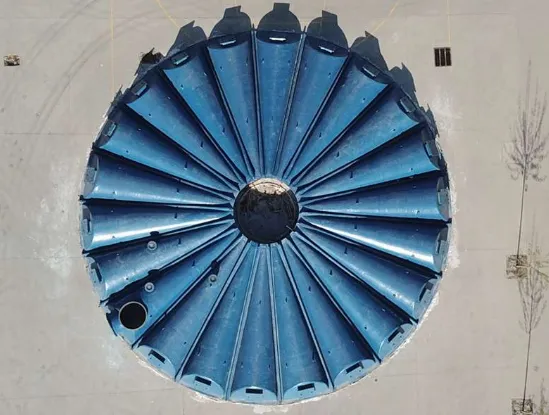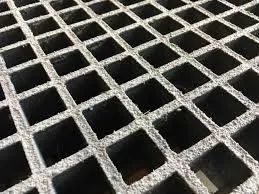
-
 Afrikaans
Afrikaans -
 Albanian
Albanian -
 Amharic
Amharic -
 Arabic
Arabic -
 Armenian
Armenian -
 Azerbaijani
Azerbaijani -
 Basque
Basque -
 Belarusian
Belarusian -
 Bengali
Bengali -
 Bosnian
Bosnian -
 Bulgarian
Bulgarian -
 Catalan
Catalan -
 Cebuano
Cebuano -
 China
China -
 China (Taiwan)
China (Taiwan) -
 Corsican
Corsican -
 Croatian
Croatian -
 Czech
Czech -
 Danish
Danish -
 Dutch
Dutch -
 English
English -
 Esperanto
Esperanto -
 Estonian
Estonian -
 Finnish
Finnish -
 French
French -
 Frisian
Frisian -
 Galician
Galician -
 Georgian
Georgian -
 German
German -
 Greek
Greek -
 Gujarati
Gujarati -
 Haitian Creole
Haitian Creole -
 hausa
hausa -
 hawaiian
hawaiian -
 Hebrew
Hebrew -
 Hindi
Hindi -
 Miao
Miao -
 Hungarian
Hungarian -
 Icelandic
Icelandic -
 igbo
igbo -
 Indonesian
Indonesian -
 irish
irish -
 Italian
Italian -
 Japanese
Japanese -
 Javanese
Javanese -
 Kannada
Kannada -
 kazakh
kazakh -
 Khmer
Khmer -
 Rwandese
Rwandese -
 Korean
Korean -
 Kurdish
Kurdish -
 Kyrgyz
Kyrgyz -
 Lao
Lao -
 Latin
Latin -
 Latvian
Latvian -
 Lithuanian
Lithuanian -
 Luxembourgish
Luxembourgish -
 Macedonian
Macedonian -
 Malgashi
Malgashi -
 Malay
Malay -
 Malayalam
Malayalam -
 Maltese
Maltese -
 Maori
Maori -
 Marathi
Marathi -
 Mongolian
Mongolian -
 Myanmar
Myanmar -
 Nepali
Nepali -
 Norwegian
Norwegian -
 Norwegian
Norwegian -
 Occitan
Occitan -
 Pashto
Pashto -
 Persian
Persian -
 Polish
Polish -
 Portuguese
Portuguese -
 Punjabi
Punjabi -
 Romanian
Romanian -
 Russian
Russian -
 Samoan
Samoan -
 Scottish Gaelic
Scottish Gaelic -
 Serbian
Serbian -
 Sesotho
Sesotho -
 Shona
Shona -
 Sindhi
Sindhi -
 Sinhala
Sinhala -
 Slovak
Slovak -
 Slovenian
Slovenian -
 Somali
Somali -
 Spanish
Spanish -
 Sundanese
Sundanese -
 Swahili
Swahili -
 Swedish
Swedish -
 Tagalog
Tagalog -
 Tajik
Tajik -
 Tamil
Tamil -
 Tatar
Tatar -
 Telugu
Telugu -
 Thai
Thai -
 Turkish
Turkish -
 Turkmen
Turkmen -
 Ukrainian
Ukrainian -
 Urdu
Urdu -
 Uighur
Uighur -
 Uzbek
Uzbek -
 Vietnamese
Vietnamese -
 Welsh
Welsh -
 Bantu
Bantu -
 Yiddish
Yiddish -
 Yoruba
Yoruba -
 Zulu
Zulu
High-Pressure Fiberglass Piping Systems Durable & Corrosion-Resistant FRP Solutions
- Overview of High-Performance Industrial Piping Solutions
- Technical Advantages of Modern FRP Piping Systems
- Comparative Analysis of Leading Manufacturers
- Tailored Engineering for Specific Operational Needs
- Industry-Specific Implementation Case Studies
- Maintenance Protocols for Extended Service Life
- Future Outlook for High-Pressure Fiberglass Piping Systems

(high-pressure fiberglass piping system)
Revolutionizing Industrial Infrastructure with High-Pressure Fiberglass Piping Systems
Modern industries increasingly adopt high-pressure fiberglass piping system
s to replace traditional metal alloys, with the global FRP pipe market projected to reach $4.82 billion by 2028 (Grand View Research). These composite systems withstand pressures up to 1,500 psi while demonstrating 40% greater corrosion resistance than carbon steel alternatives.
Technical Advantages of Modern FRP Piping Systems
Engineered for extreme conditions, these systems offer:
- ▶ 2.3x greater tensile strength compared to PVC equivalents
- ▶ Operational temperature range: -40°F to 280°F (-40°C to 138°C)
- ▶ Hydraulic flow efficiency exceeding 98% over 10-year service periods
Field tests demonstrate 72% reduction in maintenance costs when upgrading from legacy metal pipe networks.
Comparative Analysis of Leading Manufacturers
| Parameter | Standard FRP | Premium FRP | Carbon Steel |
|---|---|---|---|
| Pressure Rating | 900 psi | 1,500 psi | 1,200 psi |
| Corrosion Resistance | Excellent | Superior | Poor |
| Installation Cost/ft | $18.50 | $24.75 | $22.40 |
Tailored Engineering for Specific Operational Needs
Custom configurations address:
- 1. Chemical resistance optimization through resin matrix modifications
- 2. Diameter variations from 2" to 96" with ±0.5% dimensional tolerance
- 3. Hybrid reinforcement layers for seismic zone installations
Industry-Specific Implementation Case Studies
Desalination Plant Upgrade (2022):
- • 42% increased flow capacity
- • 18-month ROI through reduced pump energy consumption
- • Zero leakage incidents over 15km pipeline network
Maintenance Protocols for Extended Service Life
Proactive monitoring strategies enhance system longevity:
- ▶ Ultrasonic thickness testing every 24 months
- ▶ Joint integrity assessments using phased array technology
- ▶ Chemical resistance validation through coupon sampling
Future Outlook for High-Pressure Fiberglass Piping Systems
The high-pressure fiberglass piping system market anticipates 6.8% CAGR through 2030, driven by advanced manufacturing techniques enabling 15% wall thickness reduction without compromising pressure ratings. Recent material breakthroughs allow 92% recyclability of decommissioned FRP components, positioning these systems as sustainable infrastructure solutions.

(high-pressure fiberglass piping system)
FAQS on high-pressure fiberglass piping system
Q: What are the key advantages of a high-pressure fiberglass piping system?
A: High-pressure fiberglass piping systems offer exceptional corrosion resistance, high strength-to-weight ratio, and durability in extreme environments. They are ideal for industrial applications requiring reliable performance under pressure.
Q: How does a high-pressure FRP piping system compare to traditional metal piping?
A: Unlike metal piping, FRP piping systems resist rust, chemical degradation, and electrolytic corrosion. They also require less maintenance and have a longer service life in high-pressure applications.
Q: What industries commonly use high-pressure fiberglass pipe systems?
A: Industries like oil and gas, chemical processing, water treatment, and power generation rely on high-pressure fiberglass pipes due to their ability to handle corrosive fluids and extreme pressure conditions.
Q: Can high-pressure fiberglass pipes be customized for specific project needs?
A: Yes, FRP piping systems can be tailored in diameter, wall thickness, and resin formulations to meet specific pressure ratings, temperature ranges, and chemical exposure requirements.
Q: What installation considerations apply to FRP piping systems under high pressure?
A: Proper joint alignment, surface preparation, and use of compatible adhesives are critical. Regular inspection for leaks and adherence to manufacturer guidelines ensure optimal performance in high-pressure setups.
Latest news
-
High-Pressure Fiberglass Piping Systems Durable & Corrosion-Resistant FRP SolutionsNewsMay.20,2025
-
Fiberglass Reinforced Plastic Pipes Corrosion-Resistant & DurableNewsMay.20,2025
-
GRP Duct Systems Corrosion-Resistant & Durable SolutionsNewsMay.20,2025
-
Fiberglass Reinforced Plastic Pipes High-Strength & Corrosion-ResistantNewsMay.19,2025
-
Boost Data Speed Utilize RTRP Protocol for Efficient TransmissionNewsMay.19,2025
-
High-Performance Rock Drill Rod for MF Bits Mining & ConstructionNewsMay.18,2025









